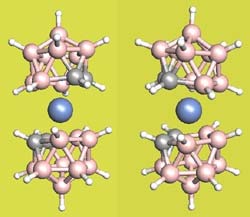Life Sciences and Chemistry
Articles and reports from the Life Sciences and chemistry area deal with applied and basic research into modern biology, chemistry and human medicine.
Valuable information can be found on a range of life sciences fields including bacteriology, biochemistry, bionics, bioinformatics, biophysics, biotechnology, genetics, geobotany, human biology, marine biology, microbiology, molecular biology, cellular biology, zoology, bioinorganic chemistry, microchemistry and environmental chemistry.

Researchers identify the pattern of gene-expression changes for tuberculosis in a living host
Researchers at the Center for Biomedical Inventions at UT Southwestern Medical Center at Dallas have identified the genetic changes that Mycobacterium tuberculosis, the bacterium that causes tuberculosis, undergoes during infection of a living host.
For the first time, researchers have adapted gene-chip technology to carry out genomic analysis of gene expression during the course of infection not only for M. tuberculosis, but for any pathogen. The findings will appear in an upcoming issue

Stem cells appear not to turn into heart cells
Two studies published in the online issue of Nature report no evidence to suggest that hematopoietic stem cells, which usually produce blood cells, can turn into heart cells after injection into the heart. These studies raise a cautionary note for interpreting the results of ongoing clinical studies in which hematopoietic stem cells are injected into the heart after a heart attack.
Loren Field, Ph.D., professor of medicine and of pediatrics at the Indiana University School of Medicine and s

St. Jude shows how disorderliness in some proteins lets them interact with a diversity of molecules
Discovery of the sequence of events in the binding of p27 to a protein complex is a model for explaining how 30 to 40 percent of the body’s proteins exploit their flexibility in order to do different tasks in the cell
Investigators at St. Jude Children’s Research Hospital have demonstrated for the first time that–contrary to the long-held belief among scientists that proteins must maintain a rigid structure in order to perform an assigned task–many proteins actually exploit dis

Evolution’s twist
USC study finds meat-tolerant genes offset high cholesterol and disease
When our human ancestors started eating meat, evolution served up a healthy bonus – the development of genes that offset high cholesterol and chronic diseases associated with a meat-rich diet, according to a new USC study.
Those ancestors also started living longer than ever before – an unexpected evolutionary twist.
The research by USC professors Caleb Finch and Craig Stanford appears in Wedne

Cross-species comparison reveals shared features between tumorigenesis and organogenesis
A new study, published in the March 15th issue of Genes & Development, provides critical new insight into the shared mechanisms of normal organ development and solid tumor formation.
By studying the cerebellum (the structure in the brain largely responsible for coordinating motor activities) Drs. Alvin Kho, Isaac Kohane, David Rowitch, and colleagues at The Children’s Hospital and Dana-Farber Cancer Institute in Boston have developed a novel method for comparing the genetic changes ass

Step towards building tiny, molecular motors
Achieved by Hebrew University, UCLA scientists
A step towards building tiny motors on the scale of a molecule has been demonstrated by researchers at the Hebrew University of Jerusalem and the University of California at Los Angeles (UCLA).
In an article appearing in the current issue of Science magazine, the researchers from the two institutions described how they were able – through light or electrical stimulation – to cause a molecule to rotate on an axis in a controlled f